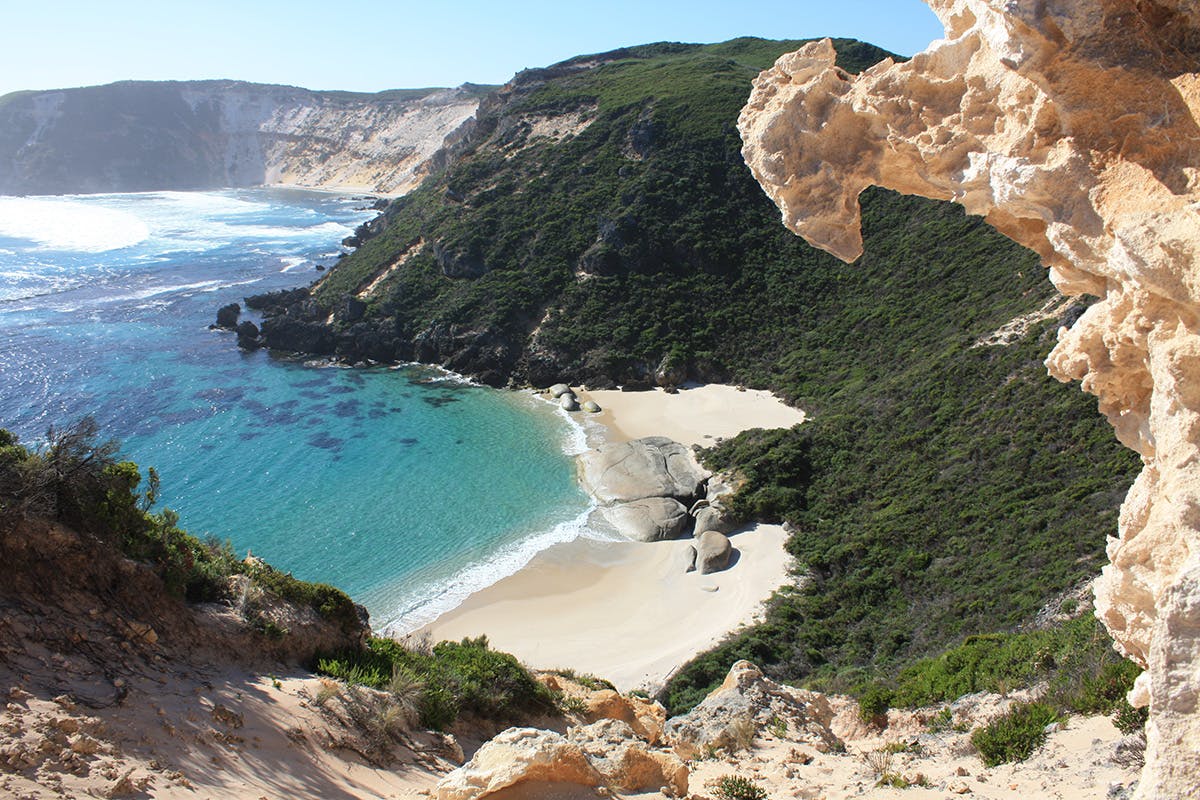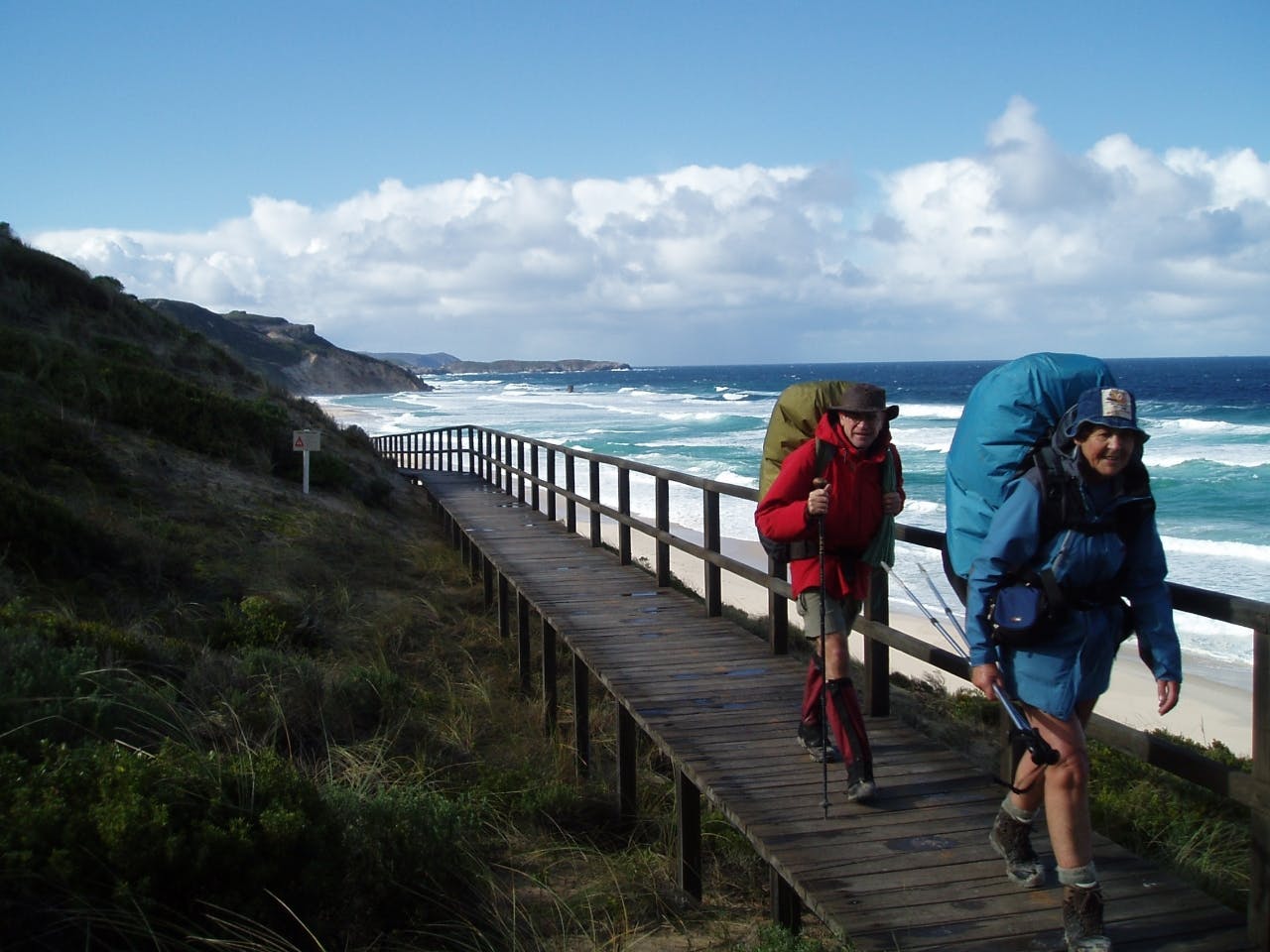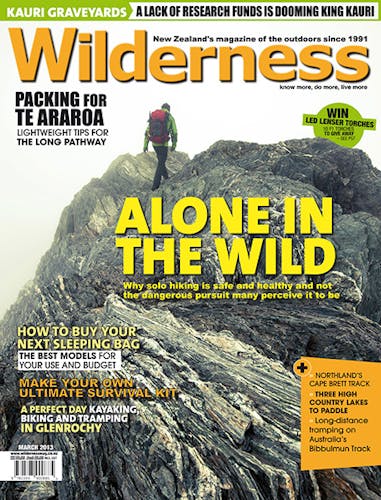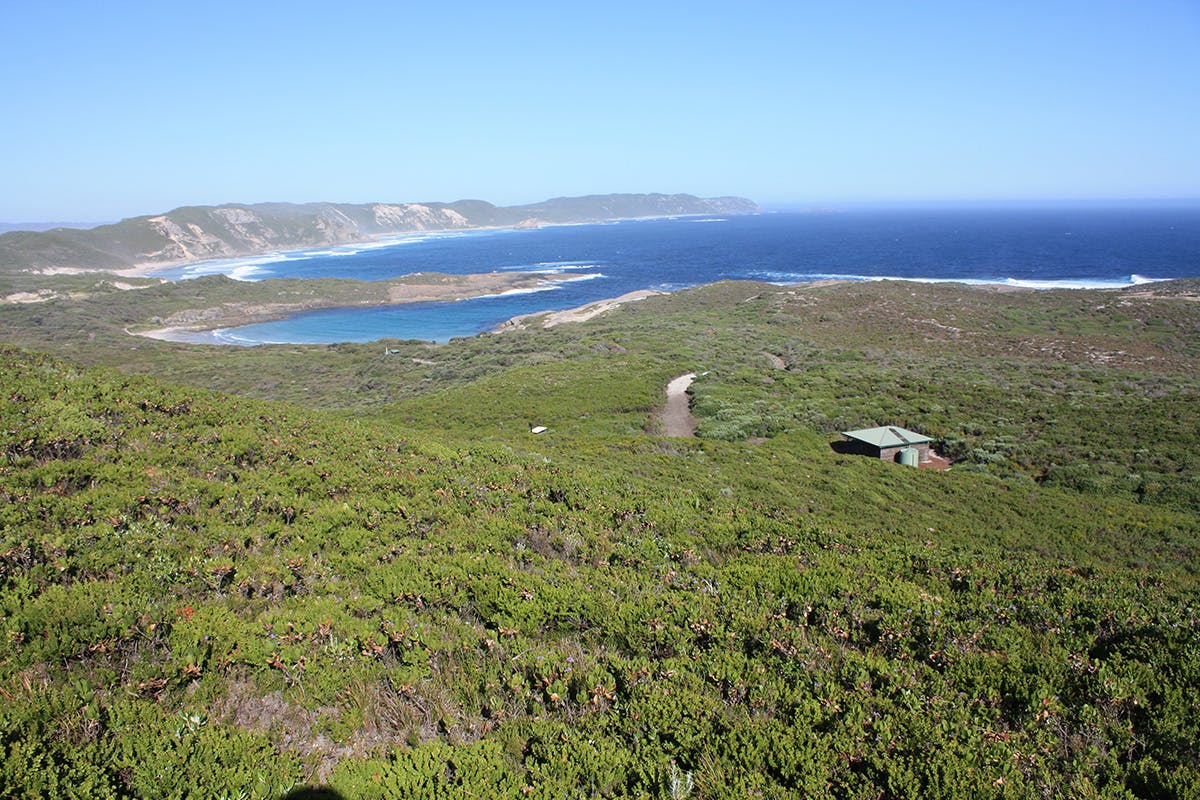Paul Rush meets up with end-to-enders on Western Australia’s Bibbulmun Track
The narrow sandy track twists and turns abruptly through tightly-packed coastal heath and offers a new surprise around every bend.
I’m suddenly confronted with a black and white snake with a forked tongue rising out of the sand. It’s a little unnerving for a Kiwi tramper. This symbol of Waugal, the ancient Dreamtime Rainbow Serpent, pops up every few hundred metres as it’s the standard track marker.
Knowing the serpent’s descendents love to slither about in this desiccated heathland and bask in the intense Western Australian sunshine encourages me to pay close attention to the pathway.
I’m hoofing it warily along the Bibbulmun Track, one of the world’s great long distance trails. It stretches for nearly 1000km from Kalamunda, on the outskirts of Perth, to the historic town of Albany on the south coast.
The track is exclusively for walkers and it leads through the surprisingly lush and verdant south west of Western Australia. It first penetrates towering karri and tingle forests and mist-shrouded valleys. Then it climbs over giant granite boulders and meanders through fascinating heathland in the final section between Walpole and Albany.
The intrepid Dave Bomba, a university lecturer turned eco-tourism guide, is leading me through the Walpole section on what is euphemistically called a ‘Short Walk Break’ by the Bibbulmun Foundation, the track administrative body.
Dave has conveyed me in 4WD style to the stunning Boat Harbour section of the mammoth track as a sample of his Wilderness Getaways tours. It’s a deliciously appetising sample, as the big sky is impossibly blue, the fresh sea breeze is invigorating and the wild Southern Ocean seascapes take my breath away.
Lively seas are breaking over solid granite rock platforms that have been worn smooth and round by countless millennia of wave action. These reefs were the very edge of the great supercontinent of Gondwana when the Antarctic plate broke away and drifted towards the South Pole 50 million years ago.

A sheltered cove of rope Bay
Two big ‘boomers’ crossing the track bring me abruptly back to the present. The large male western grey kangaroos have a habit of suddenly breaking cover and rousing long-distance hikers from their peaceful reverie. These big bounders stand two metres tall and when cornered can use the nifty trick of balancing on their tail and kick-boxing with powerful hind legs.
Pushing on through scrubland we come across random clusters of wildflowers, sprinkled like precious stones over the heath. The wild profusion of pink pimelia qualup bells, brilliant orange hibbertia stars, red grevillea and velvety banksias are interspersed with delicate orchids. This is one of the world’s renowned biodiversity hotspots where thousands of endemic plants flourish in their own exclusive microclimates.
A shingleback bobtail lizard slap-bang in the middle of the path stops us in our tracks. This defiant ‘Stumpy’ has no intention of ceding the right of way and opens his broad mouth to display a fearsome blue tongue and razor-sharp teeth.
We step around the game little reptile in time to see a red-caped plover flapping haphazardly overhead. These cunning avian actors have devised a clever play for leading predators away from their nests. They simulate an injury by limping off as if one wing is broken and once the subterfuge is successful they fly out of sight.
High on the hill above Rope Bay we gaze in wonder at pink-tinged limestone cliffs and an incredibly beautiful sheltered cove below us. The water is crystal clear and the beach is a crescent of pure white silica sand. This could be any unspoiled Pacific island paradise and yet we are at 35° south latitude on Australia’s south coast.
In the Boat Harbour shelter hut I meet up with a real ‘Bib’ Track veteran. This true end-to-ender, a roving Dutchman, tells me that the cool sea breezes and pure Antarctic air along the south coast has been a welcome relief after the hot, humid inland sections.
“I started out on the track two months ago and made a practice of waking at 3am to begin walking in cooler conditions. Each day I carried six litres of water and took a siesta at midday, continuing in the late afternoon,” he tells me. “I’ve averaged 22km a day and look forward to having a rest when I reach Denmark.”
He strikes me as remarkably fit, having humped a 25kg pack over most of the ‘Bib’, as trekking aficionados call the track. The fact that the track is free with no permits or hut fees required was a surprise to him. He’s a little miffed about the lack of cellphone coverage, not seeming to appreciate that this is a vast state with a miniscule population.
He has seen evidence of fire damage on the track. Dave explains that the blackened tree trunks en route are merely indicative of the national park rangers’ precautionary scrub burning. In the tinder dry Australian bush this practice prevents the build-up of combustible undergrowth, which could lead to a more destructive forest fire.

Bibulman hikers cruise along the boardwalks above Mandalay Beach. Photo: Bibulman Track Foundation
Heading back to civilisation, Dave shows me his geological pride and joy, the dream-like Green Pool and Elephant Rocks. On a wave-battered coast that is constantly assailed by the Roaring Forties winds, this one location has a solid phalanx of granite reefs that protect a natural pool. Visitors can enjoy halcyon summer days swimming in a little piece of paradise, where whales, dolphins and seals can often be seen close inshore.
Relaxing at Karma Chalets near Denmark, under a canopy of red gums with multi-coloured parakeets adorning my verandah, I reflect on my brief experience on one of the world’s great walking tracks.
The ideal time to do the ‘Bib’ is in September/October, when conditions are cooler. The springtime glory of wildflowers is a wonderful morale booster on the lonely stretches of track.
To make the track achievable for the average hiker, the Bibbulmun Track Foundation has divided it up into 58 bite-sized chunks. They offer a number of ‘Walk Breaks’ from two days to three weeks duration with individual itineraries to suit each party, either camping or staying in nearby towns.
By the end of the day I’ve bitten off as much of my bite-sized chunk as I can handle and am happy to relax in the secluded luxury of my chalet. The night sounds of the bush lull me to sleep.
I dream that I’m on an epic eight-week adventure, knocking off the ‘Bib’, sleeping in three-sided shelters, seeing off giant kangaroos and staring down that diabolical Dreamtime Rainbow Serpent.
I may not have gone the full distance but I’ve certainly grasped the challenge of the great track and shared part of the dream.
Wild File
The track The Bibbulmun starts in the Perth suburb of Kalamunda and runs due south through Dwellingup, Balingup, Pemberton, Walpole, and Denmark to Albany. Bibbulmun Foundation Walk Breaks allow you to walk independently but return to hot showers, home-cooking and a soft bed. Independent walkers can camp in the overnight shelters with no permits or fees required.
Getting there Air New Zealand offers daily non-stop flights from Auckland to Perth
Further information www.westernaustralia.com.au, www.bibbulmuntrack.org.au, www.karmachalets.com.au







